Memory of Nations / Paměť národa

Yesterday I published a small article about Stolpersteins in one of the parts of Prague, in Bubny. At the same time I wrote @tibfox that my article will have a sequel. So here is the sequel. But this time I'm not publishing under #worldmappin. ( https://peakd.com/czech/@krakonos/stolperstein-stones-of-the-disappeared )
Včera jsem publikoval malý článek o Stolpersteinech v jedné z částí Prahy, v Bubnech. Zároveň jsem napsal @tibfox, že můj článek bude mít pokračování. Tak tady je to pokračování. Tentokrát ale nepublikuji pod #worldmappin.
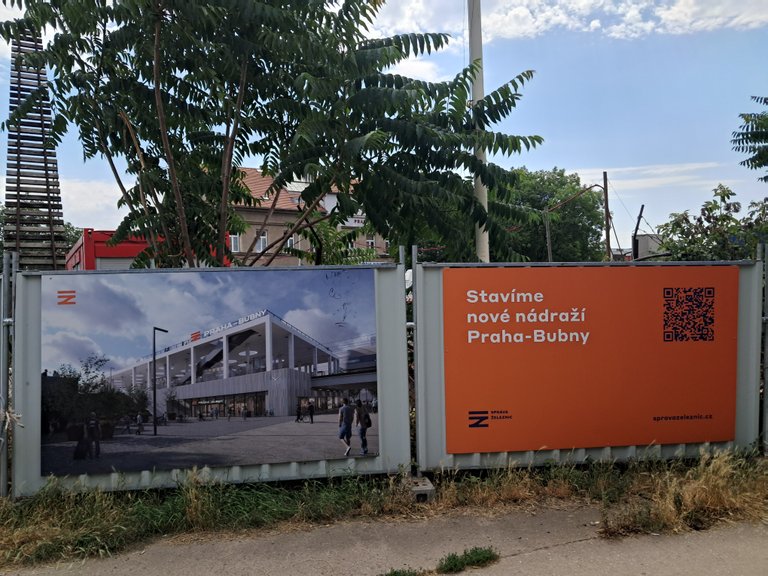
Yesterday I wrote about the station from which transports of our fellow Jews left between 1941 and 1945, never to return. In the picture you can see a little bit of the Gate of No Return monument, which is meant to commemorate this event.
I also wrote that the station is being reconstructed. Or rather, a new station is being built and the old one is to become a Holocaust/Shoah memorial.
Several kilometres of construction barriers stretch around the entire site. Barriers can have many functions. For example, they can be used for drawing, painting or spray painting.
Včera jsem psal o nádraží, odkud v letech 1941-1945 odjížděly transporty našich židovských spoluobčanů, aby se už nikdy nikdo nevrátil. Na obrázku vidíte kousek památníku Brána nenávratna, který má tuto událost připomínat.
Psal jsem také, že nádraží se rekonstruuje. Respektive staví se nové nádraží a z toho starého se má stát památník hlolocaustu / šoa.
Kolem celého staveniště se táhne snad několik kilometrů stavebních zábran. Zábrany mohou mít mnoho funkcí. Například se na ně dá kreslit, malovat, nebo stříkat sprejem.
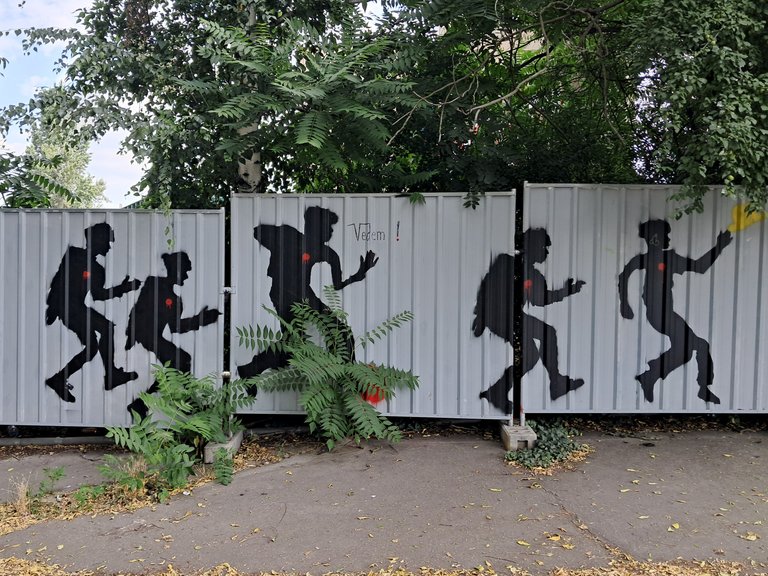
Are these just random little things? What does "Vedem" mean? "Vedem" was a literary magazine written by a group of Jewish boys in the Terezín ghetto in 1942-1944. Someone here has some special knowledge!
Jsou to jen náhodné malůvky? Co znamená "Vedem"? "Vedem" byl literární časopis psaný ručně skupinou židovských chlapců v terezínském ghettu v letech 1942–1944. Tady má někdo zvláštní znalosti!
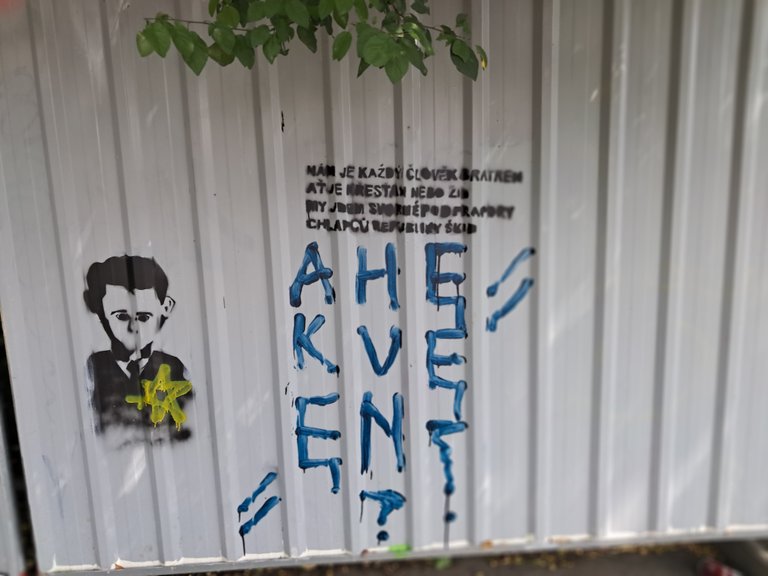
It says here:
To us every man is a brother,
whether he is a Christian or a Jew.
We walk freely under the banners
of the boys of the Republic of ŠKID.
( I'm sorry. Ther are verse. I can't translate Slavic, Czech verse into English.)
The boys from prison block L414 in the Terezín ghetto called their "home" the Republic of ŠKID.
Tady je napsáno:
Nám je každý člověk bratrem,
ať je křesťan, nebo žid.
My jdem svobodně pod prapory
chlapců republiky ŠKID.
Chlapci z vězeňského bloku L414 v gnettu Terezín nazývali svůj „domov“ republikou ŠKID. (Škola iměni Dostojevskovo. To neřešte ...)
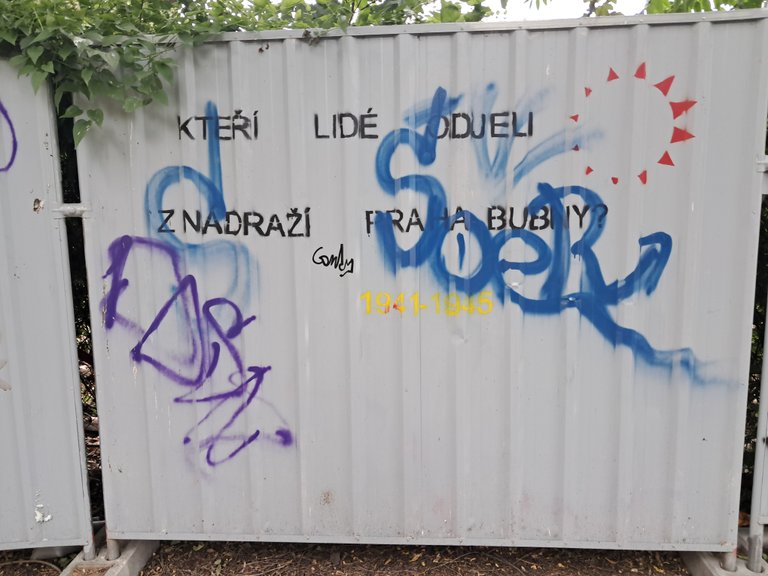
It says here:
Which people left Bubny station 1941 - 1945?
Tak pro Čechy to vlastně psát nemusím, že? Oni si to jaksi přečtou z fotografie ...
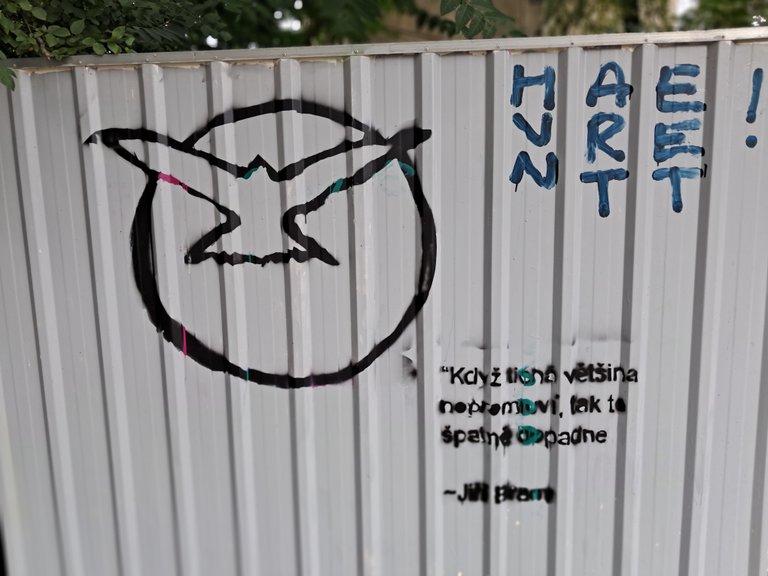
"If the silent majority doesn't speak up, it will end badly."
Jako v předchozím případě ...
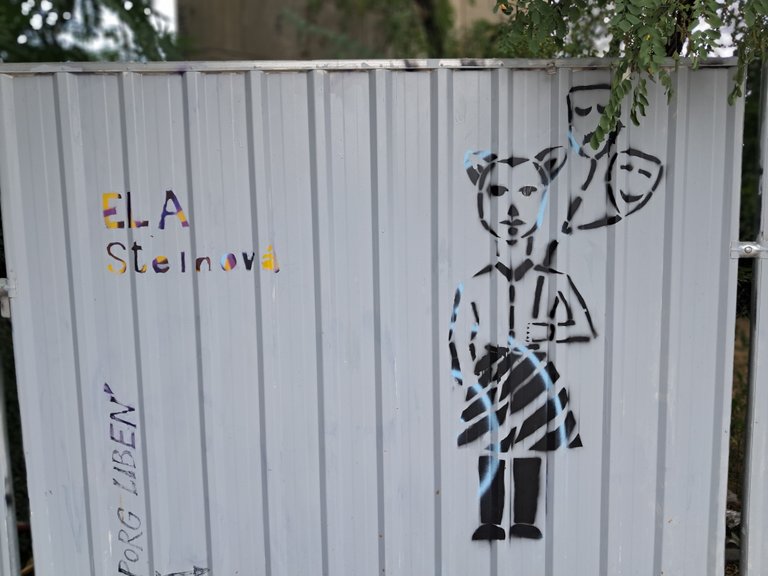
PORG! And it's clear to me. The first restored real high school! The students of this high school decorated these boards with their creations. Probably as part of their history lessons. The Holocaust is discussed in the quartet and then again in the octave.
PORG Libeň! A je mi to jasné. První obnovené reálné gymnázium! Tyhle desky ozdobili svými výtvory žáci z tohoto gymnázia. Pravděpodobně v rámci hodin dějepisu. Téma holokaust se probírá v kvartě a pak znovu v oktávě.
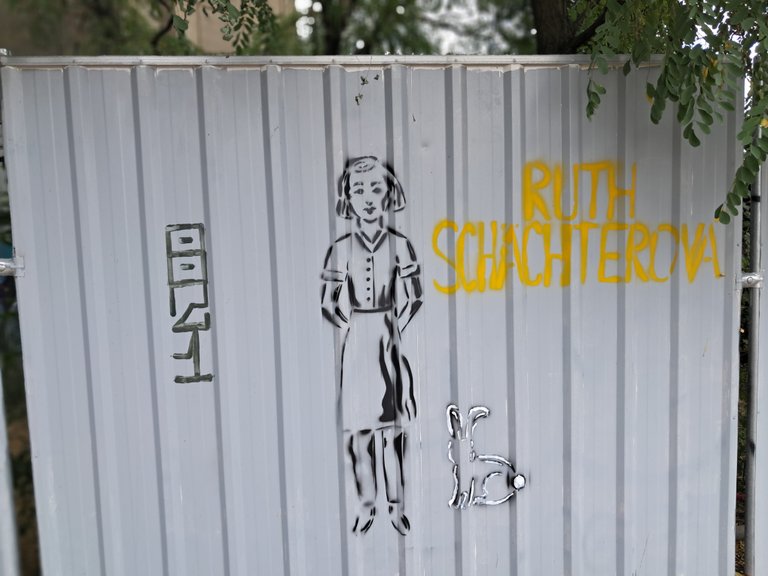
Stolpersteins are not the only ones left after the victims of Nazi murder. Every murdered person had a name and memories, old photographs. The students of the gymnasium apparently had these photographs at their disposal and painted them over the barrier according to their abilities.
Stolpersteiny nejsou to jediné, co zůstalo po obětech nacistického vraždění. Každý zavražděný měl své jméno a zůstaly na něj vzpomínky, staré fotografie. Studenti gymnázia měli tyto fotografie zřejmě k dispozici a podle svých schopností je malovali na stavební bariéru.
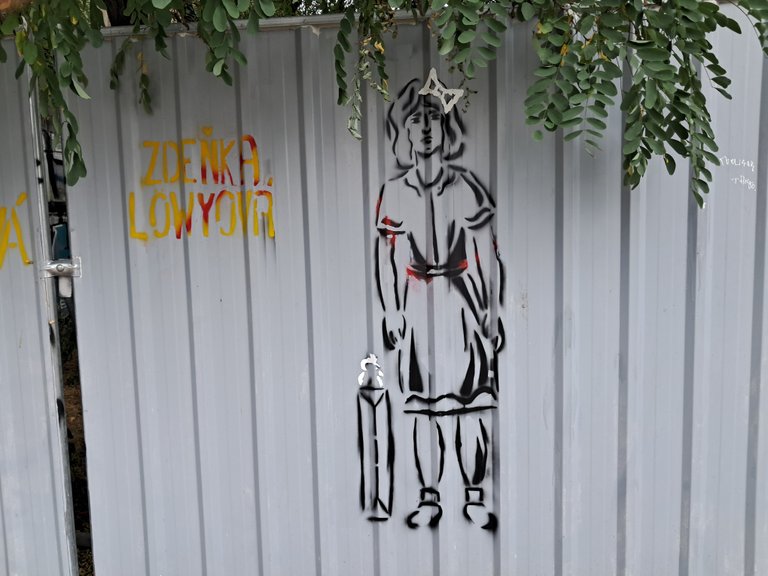
The students apparently used the database of the "Post Bellum" organization. This organization has created and is still creating a database of memories of witnesses of historical events as part of the "Memory of the Nation" project. That is the title of my article today.
I think it's probably easiest to insert a link: https://www.memoryofnations.eu/en/about-project
Studenti zřejmě využili databázi oraganizace "Post Bellum". Tato organizace vytvořila a stále vytváří databázi vzpomínek pamětníků historických událostí v rámci projektu "Paměť národa". To je i název mého dnešního článku.
Nejsnazší asi bude vložit odkaz: https://www.pametnaroda.cz/cs/o-projektu
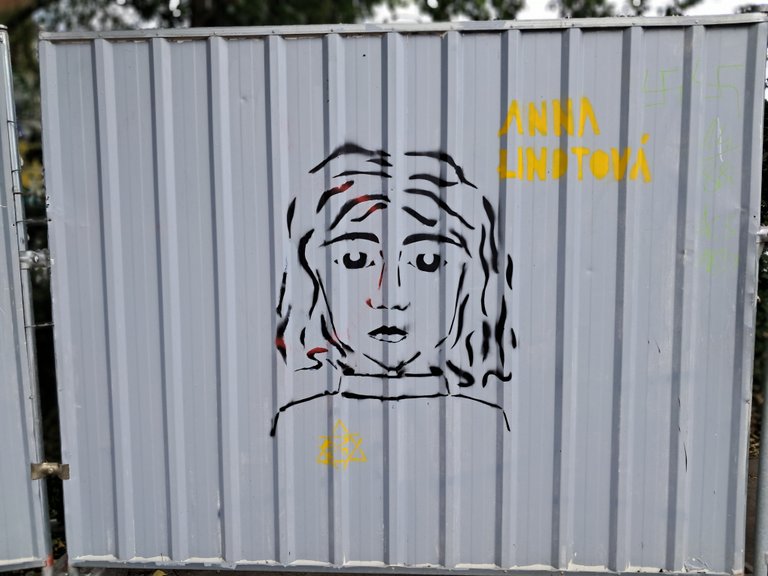
This organization works with history teachers across our country. The organization facilitates meetings between memoirists and teachers and students. In the classroom, the children then process what they learned at the meeting in a variety of ways.
Tato organizace spolupracuje s učiteli dějepisu v celé naší zemi. Zprostředkovává setkání pamětníků s učiteli a studenty. Ve třídě pak děti různými způsoby zpracovávají to, co se na setkání dozvěděly.
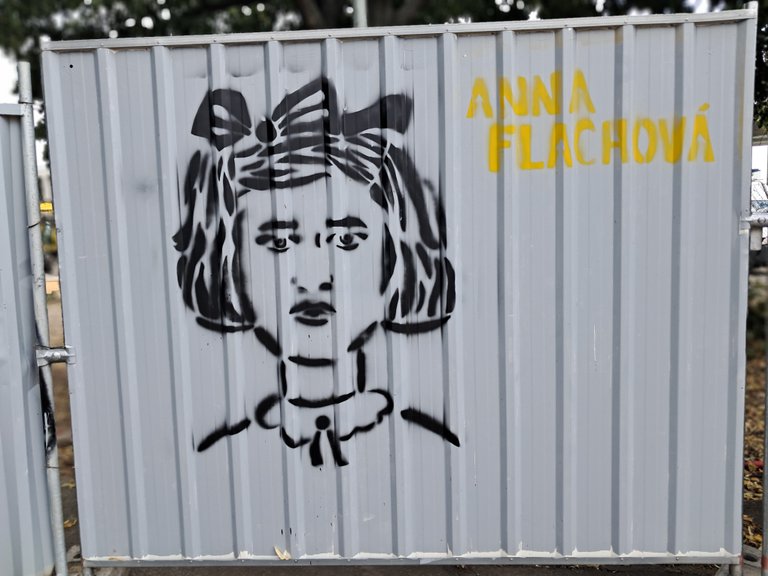
The audio recording of the interview with the memoirist and the pupil's processing of this interview is submitted to the organisation. How do I know? I am a history teacher and I work with this organization too.
Zvukový záznam rozhovoru s pamětníkem a zpracování tohoto rozhovoru žáky se předává organizaci. Jak se to vím? Jsem učitel dějepisu a s touto organizací také spolupracuji.
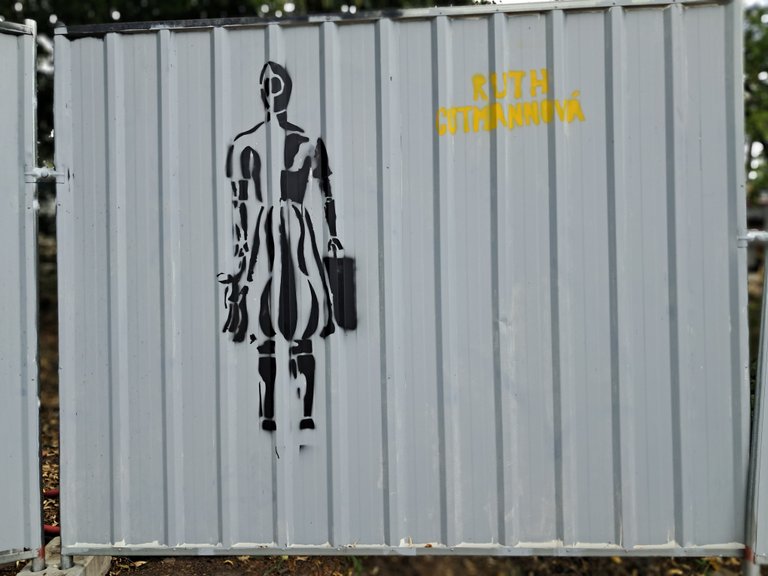
Fifteen years ago, I used to meet Holocaust survivors on a regular basis. Today there are hardly any left. But I can convey to children what I have learned from direct witnesses.
Před patnácti lety jsem se ještě běžně setkával s lidmi, kteří přežili holocaust. Dnes už skoro žádní nežijí. Ale mohu dětem předávat, co jsem se dozvěděl od přímých svědků.
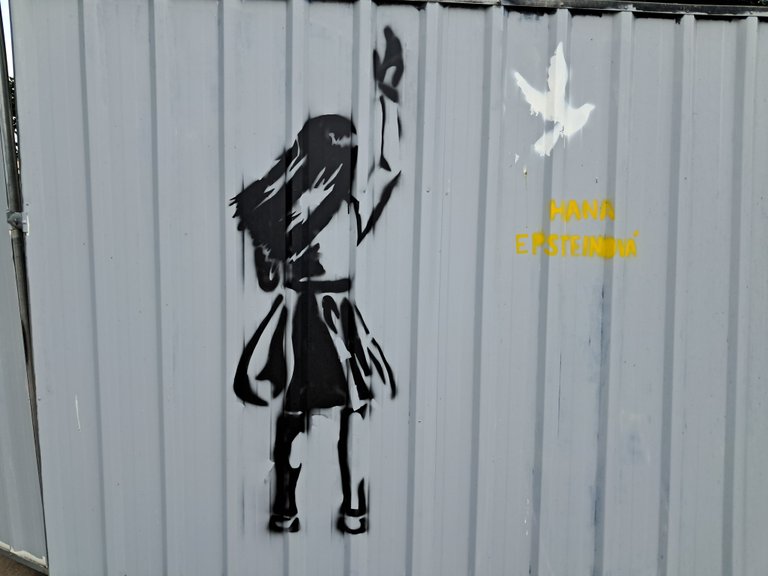
I think modern history is taught well in our schools. Or rather, it can be taught well if the teacher tries.
Myslím, že moderní dějiny se na našich školách vyučují dobře. Nebo spíš se dají učit dobře, pokud se učitel snaží.
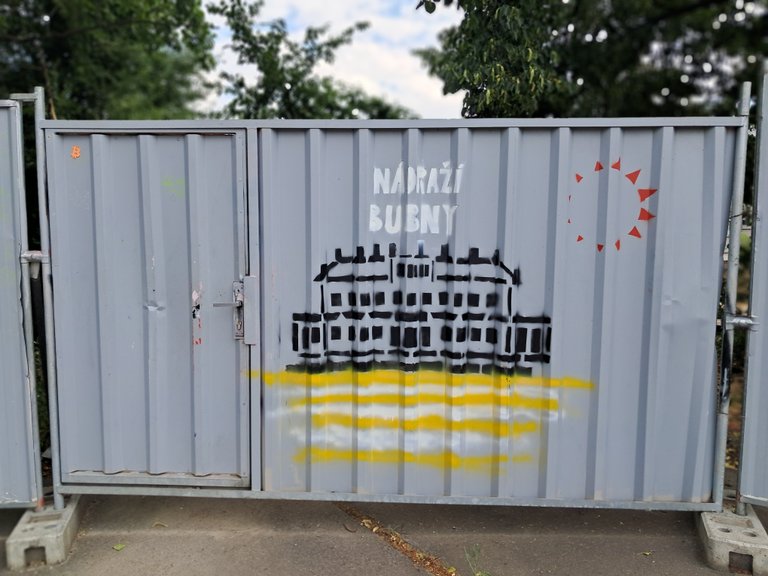
I haven't shown all the children's pictures yet but I think I can end the story of Bubny station here.
Ještě jsem nepředvedl všechny dětské obrázky, ale myslím, že zde mohu příběh stanice Bubny logicky skončit ...
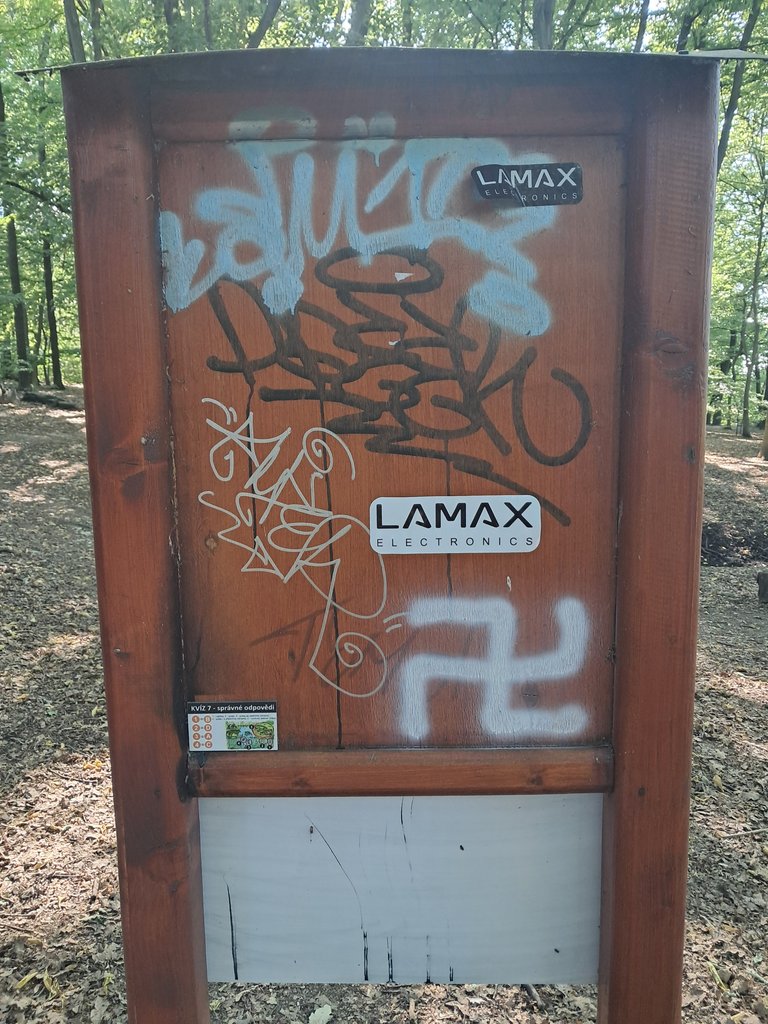
Or not. I'll end up more combative. I love my nation. It's as good as any nation in the world. That also means that there are people in my nation who hold completely extremist, unscientific, racist, xenophobic views.
History teaches us that it is possible to go from such disgusting drawings to even more disgusting actions. We must be on our guard to ensure that nothing like this ever happens again.
Anebo ne. Skončím bojovněji. Mám rád svůj národ. Je stejně dobrý jako všechny jiné národy světa. To ale také znamená, že i v mém národě žijí lidé, kteří zastávají naprosto extremistické, nevědecké, rasitické, xenofobní názory.
Historie nás učí, že od takových nechutných kreseb je možné přejít k ještě nechutnějším činům. Musíme se mít napozoru, aby se už nikdy nic takového neopakovalo.
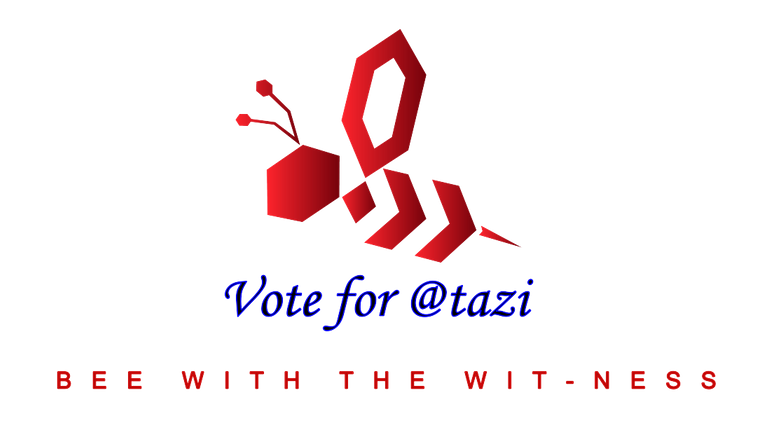
🎉🎉🥳 Congratulations 🥳🎊🎊
Your post has just been curated and upvoted by Ecency
keep up the good work
Join us on the Ecency Discord
Thank you!
Skvělá publikace, nutí k zamyšlení!
A tahle věta: "If the silent majority doesn't speak up, it will end badly."
To je mi velmi povědomé a blízké, thanks @krakonos
Díky, že ses zastavil. Žiješ v Praze dost dlouho. Můžeš třeba psát příspěvky o tom, co je tu zajímavého z pohledu expata. S něčím jsi už začal. Díval jsem se na Tvoje články zpětně.